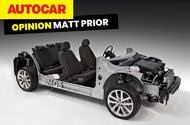Why Do Car Companies Share Platforms, and Should Drivers Care?
If you’ve ever heard someone say their car is “basically a Volkswagen underneath,” you might have wondered what that actually means. Car platforms—the hidden skeletons beneath the shiny exteriors—are a hot topic in the auto industry. But for years, manufacturers kept quiet about them, worried drivers would balk at the idea of a budget car sharing DNA with a luxury model. So, why do car companies share platforms, and does it really matter to you as a driver?
The Real Reason Behind Platform Sharing
Let’s get real: developing a new car from scratch costs a fortune. We’re talking billions of dollars and years of work. The most complex and expensive part? The area between the front wheels and the driver. That’s where the engine, transmission, dashboard, and a maze of electronics all come together. It’s also where safety features, sensors, and cameras are packed in these days.
If manufacturers can design this critical section once and use it across multiple models—even across different brands—they save a ton of money. This isn’t just about cutting corners. It’s about making cars safer, more reliable, and even more affordable for buyers. According to a 2023 report from McKinsey & Company, platform sharing can reduce development costs by up to 30 percent and speed up time-to-market by nearly two years.
Do Drivers Actually Care What’s Under the Hood?
Here’s the twist: most drivers don’t mind. In fact, some see it as a plus. For example, Skoda owners often take pride in knowing their car shares its underpinnings with Volkswagen—a brand known for solid engineering. It’s like getting a designer handbag at a discount.
But it’s not always the same story. Porsche Cayenne drivers, for instance, rarely mention that their SUV shares a platform with other Volkswagen Group models. They trust that Porsche has added its own magic, making the extra cost feel justified.
The bottom line? As long as the car feels unique and delivers on performance, comfort, and safety, most people are happy. The badge on the front matters more than the bolts underneath.
How Do Shared Platforms Affect Car Design and Performance?
You might think that sharing a platform means all cars feel the same. Not true. Modern platforms are designed to be incredibly flexible. They can stretch or shrink to fit everything from compact hatchbacks to roomy SUVs. Engineers can tweak suspension, steering, and even the way the car handles impacts to give each model its own personality.
Take the Volkswagen MQB platform, for example. Over 40 million cars have been built on it, spanning everything from the VW Golf to the Audi TT. Yet, each car has its own distinct feel. Designers and engineers have more freedom than ever to make sure a sporty model feels agile, while a family car feels comfortable and safe.
Are There Limits to What a Shared Platform Can Do?
There are still some boundaries. For years, certain performance features—like all-wheel drive or high-powered engines—were tough to add if the platform wasn’t designed for them from the start. Sometimes, when enthusiasts asked why their favorite model didn’t come in a sportier version, the answer was simple: the platform just couldn’t handle it, and re-engineering would be too expensive for a niche market.
But technology is changing the game, especially with electric vehicles (EVs). Since EVs don’t need a traditional driveshaft for all-wheel drive, adding a second motor at the rear is much easier—if the platform allows it. And with innovations like in-wheel motors (where the motor sits inside the wheel hub itself), even more configurations are possible. The upcoming Volkswagen ID 2 R is rumored to use this tech, hinting at a future where almost any platform could support any drive setup.
What Does This Mean for the Future of Cars?
The rules are shifting fast. Platform sharing is no longer a dirty secret—it’s a smart business move that benefits both manufacturers and drivers. As electric and hybrid technology evolves, expect even more flexibility and creativity in car design.
For buyers, this means more choices, better value, and faster access to the latest features. You might drive a family-friendly SUV that shares its bones with a high-performance sports car, and never notice a thing—except maybe a little extra confidence in your purchase.
So, next time someone tells you your car is “basically a Volkswagen underneath,” you can smile and know the truth: it’s not about what’s under the skin, but how it all comes together to create a car that fits your life. And that’s what really counts.

